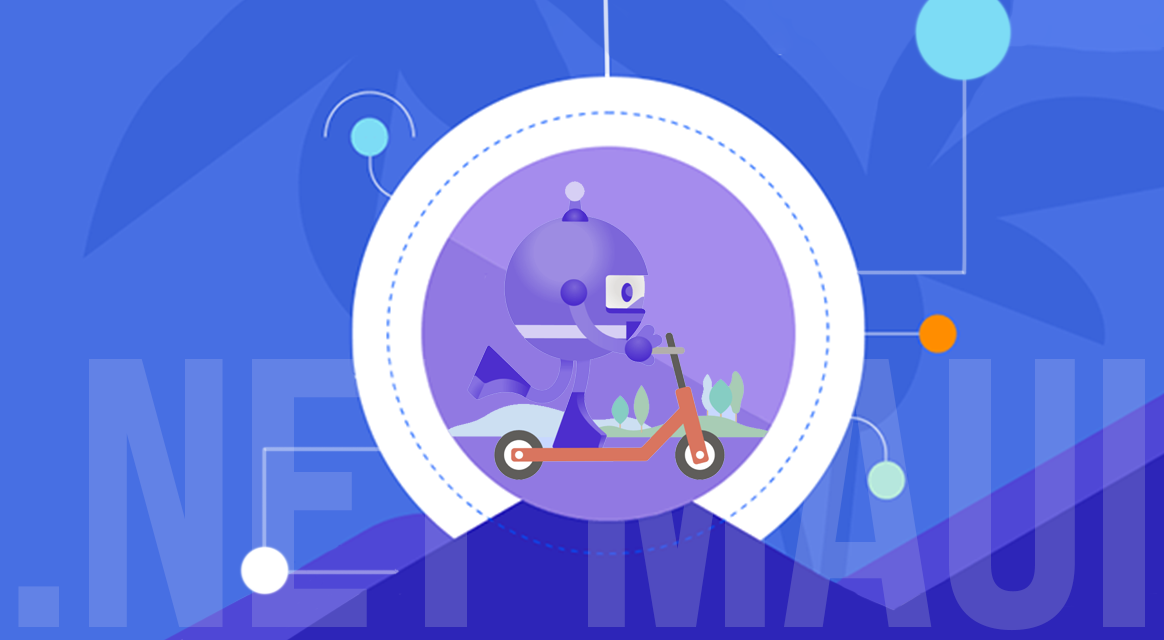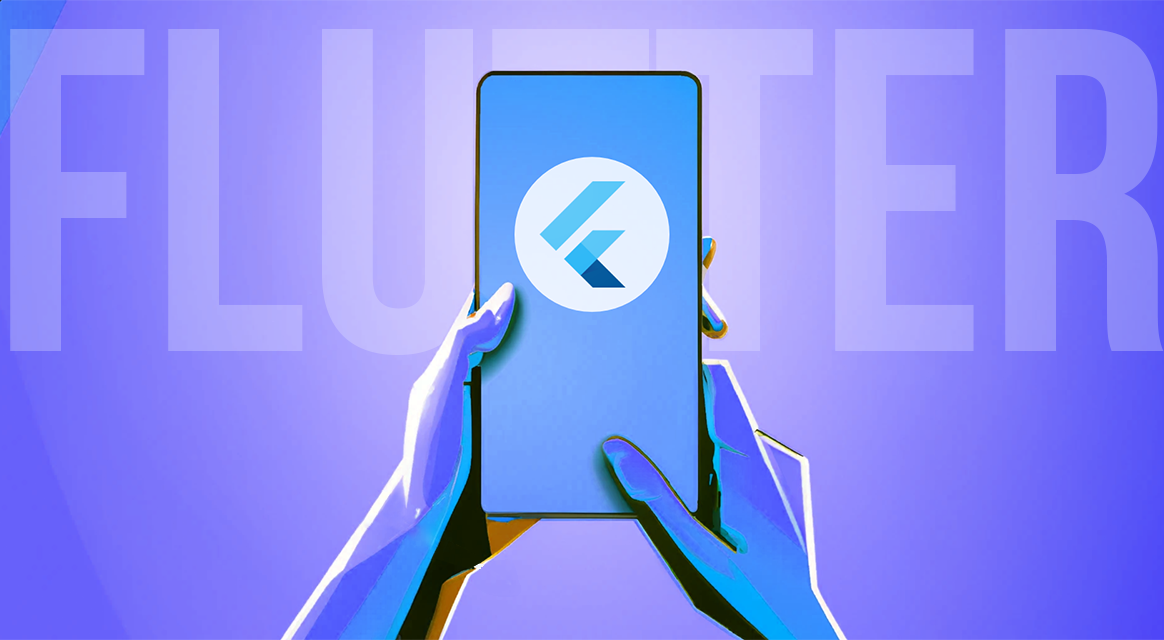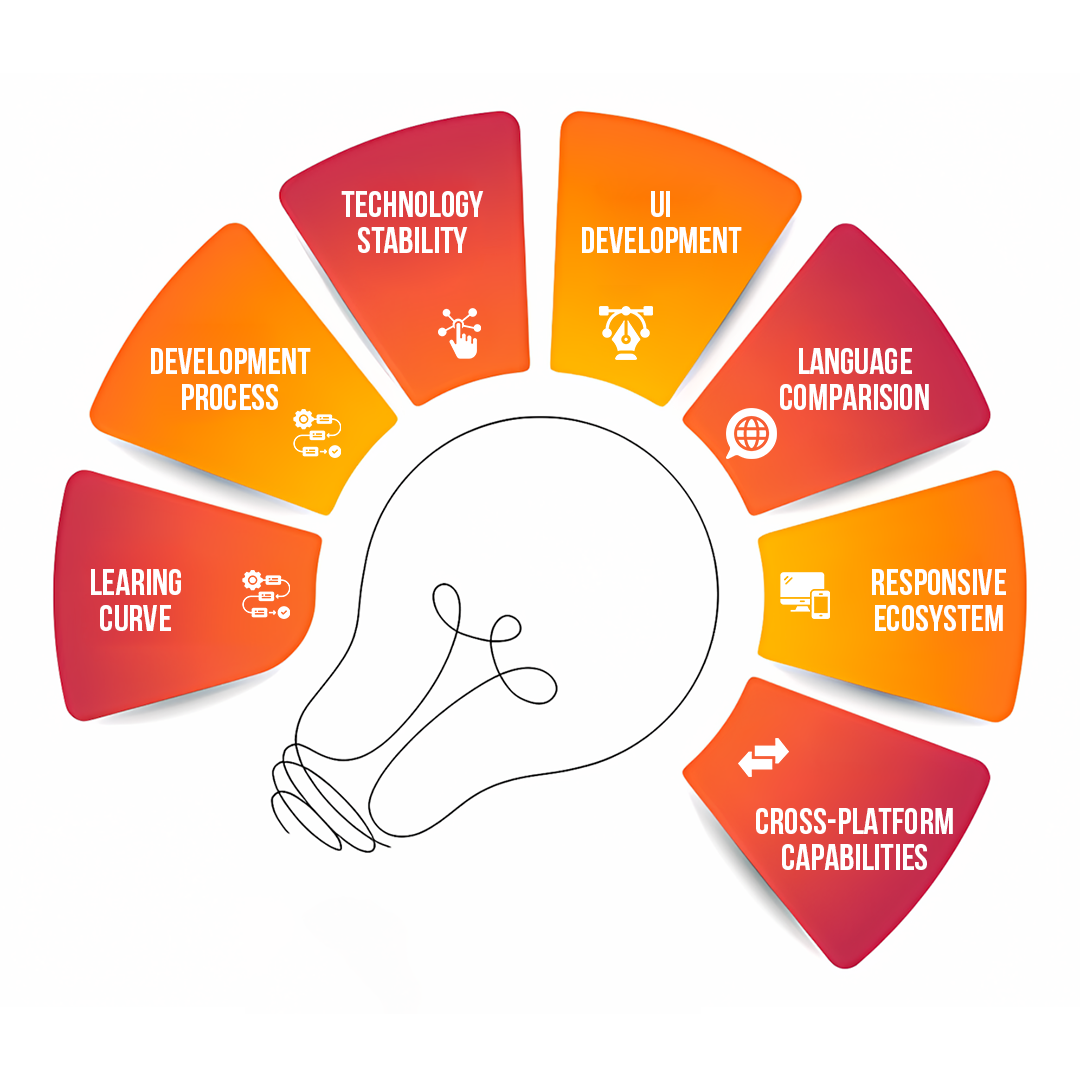
Here’s what you will learn:
Every day we see the launch of new technology in the market. But, mobile apps are the constant need that keeps businesses toes. And, instead of native apps that take time and specific resources becomes a challenge. Especially for a start-up. So, in this situation, cross-platform apps come to your rescue. And, in this race, .NET MAUI vs. Flutter are in constant debates. If you are also stuck to find one winner, let’s dive in to know more.
Table of Contents
Is Flutter better than .NET MAUI?
Whether Flutter is in a much better position than .NET MAUI or not completely depends on the application you are using. Flutter is more competitive when you need UI consistency, fast development, and strong community adoption. However, .NET MAUI is preferable in any case you need to embed deeply into the Windows/macOS platforms, deliver native user interfaces, and be compatible with the .NET ecosystem.
The following is a brief comparison of them with some important aspects:
Flutter is better if you:
- Want a highly customizable interface and a similar appearance across platforms.
- Need faster development using a hot-reload feature.
- Require access to a vast system of third-party tools and extensions.
- Prefer a mature, well-supported framework that is well supported by the community.
.NET MAUI is better if you:
- Use react native UI components to obtain a more native look and feel.
- Microsoft ecosystem work (e.g., C#, .NET, Visual Studio).
- Require desktop and macOS desktop support.
- Want to reuse business logic through those already in operation in .NET applications.
.NET MAUI vs. Flutter: A Head-to-Head Comparison
|
Key Factors |
.NET MAUI |
Flutter |
| Stable app performance | Good performance for applications. | Better for most apps, may lag in high-load scenarios. |
| Cross-platform outreach | Accesses native iOS/Android features and supports desktop & web (with extra tools). | Uses a single codebase for building apps across all platforms. |
| Development cost | Typically more costly than Flutter, developer turnover has less impact. | Usually costs less than a .NET MAUI project. |
| UI customizability | Uses native Android/iOS UI components and .NET ecosystem components. | Highly customizable UI with space for experiments and modern designs. |
| Rapid app development | Rich ecosystem of integrations and built-in libraries for efficient development. | Hot reload, pre-built libraries, and SDKs for fast app development. |
| Software reliability & maintenance | Inherits Xamarin’s stability, offering long-term reliability and maintenance support. | Stable and maintainable, though slightly behind .NET MAUI in performance. |
| Community support | It relies on the .NET ecosystem; the community is growing but is smaller than Flutter. | Larger global community and wider adoption than .NET MAUI. |
Confused Between .NET MAUI & Flutter?
Get expert guidance to choose the right framework for your app.
Adoption & Popularity
Although Flutter and .NET MAUI do the same thing, they also have significant differences, which influence their application.
Flutter has been the most used cross-platform development platform amongst programmers worldwide. Specifically, it enjoys a strong reputation among the entire list of software development frameworks, having 9.4 percent of software developers as its users.
Being a much more recent technology, the popularity of .NET MAUI is increasing rapidly. Specifically, 3.1% of developers use MAUI, which implies that it has already outpaced its predecessor, Xamarin, which is used among 2.9% of developers.
App performance
.NET MAUI is developed based on .NET, which is among the most efficient software development frameworks with regard to performance. With the ability to leverage a range of tools of the .NET ecosystem, .NET MAUI can make performance virtually the same as native across the platforms.
Cross-Platform Software Developer
Although Dart is not as performance-optimized as .NET, Flutter can provide stable and efficient performance, especially in applications with a small to medium data load. Through its effective rendering engine, Skia (which will be replaced with a more powerful Impeller engine), a majority of applications developed with Flutter app development are fast, stable, and do not contain any bottlenecks in terms of performance. Nonetheless, programs that need intensive calculations can be constrained.
In general, Flutter could perform slightly better or equally with MAUI in the case of simple and medium applications. In the meantime, MAUI could be more suitable for large and resource-intensive applications, being powered with a rich .NET tech stack.
Cross-platform Outreach
One application of .NET MAUI is in mobile app development since the platform effectively employs APIs to access native iOS and Android functionality. In the meantime, it can be integrated with Visual Studio Code to create apps on all platforms, and specifically, desktop applications. The Blazor web software is also a good fit with the framework.
Flutter supports a wide variety of platforms, such as iOS, Android, web, and desktop (Windows, macOS, and Linux), and utilizes a single codebase to run an application. Like .NET MAUI, Flutter is compatible with Visual Studio Code, which can be used in Visual Studio to debug and code across platforms.
Development cost
Although it is also possible to develop with .NET MAUI on a cross-platform platform, by definition, it can be a bit more expensive than Flutter because it integrates with the Microsoft ecosystem, which, in many cases, requires you to pay a license fee for enterprise development tools such as Visual Studio.
As well, finding .NET developers may be costlier than Flutter developers. Nevertheless, for companies that have adopted the use of Microsoft technologies before, it is possible that .NET MAUI can provide a cost advantage by drawing seamlessly.
Flutter has an average cost of development because it provides a single codebase for Android, iOS, Web, and desktop, which does not require multiple development teams. An open-source and comprehensive package ecosystem also reduces costs.
Although Flutter may be a more cost-effective solution compared to .NET MAUI, the latter may be a more cost-effective solution for the project within the Microsoft ecosystem.
UI customization
.NET MAUI creates user interfaces that are highly customizable with the use of XAML markup language. Also, with the help of .NET MAUI, the user interface controls and components are used in the creation of stable and dynamic applications based on the controls and components of the .NET ecosystem.
.NET MAUI creates the native interfaces of the mobile platforms, as it has access to the native features of Android and iOS. Lastly, unlike Flutter, the accessibility features of the platform are native to .NET MAUI and can ensure increased app performance for users.
Flutter is an old cross-platform development framework that also provides a wide range of ready-made widgets. It also supports Canva, which enables development teams to sketch and create unique UI/UX designs. Although a similar feature can be found in .NET MAUI as well, it is significantly easier to use in Flutter.
Rapid app development
Using a well-established list of tools and features, .NET MAUI simplifies the process of software engineering and increases the speed of development among software engineers. As an example, just-in-time (JIT) compilation, ahead-of-time (AOT) compilation, XAML hot reload, etc.
The framework works with Visual Studio and Visual Studio for Mac, where it can be easily integrated to give the familiar environment of a .NET developer. It is also rich in an ecosystem of built-in libraries, whereby developers of .NET MAUI can easily streamline the development of apps.
Flutter also has a good array of tools and pre-built libraries, which means rapid and efficient software development. Like .NET MAUI, Flutter is developed on the basis of such capabilities as JIT compilation, AOT compilation, and hot reload.
In addition, Flutter software engineers have the opportunity to create apps in less time by relying on Android Studio, which is the integrated development environment of Android-based apps, and the most efficient iOS and desktop development toolkits.
Lastly, the Dart programming language employed by Flutter is characterized by the emphasis on concise and friendly code, which increases the speed of development to a significant extent.
Software reliability and maintenance
Shortly after its release in 2022, .NET MAUI was criticized due to its failure to be reliable. Specifically, the platform faced problems in the form of the stability of its performance and demonstrated certain platform-specific inconsistencies.
The situation, however, became stable with the release of .NET 8 and improved with the release of .NET 9. Cross-platform testing, as well as strong typing and debugging, is now available in .NET MAUI.
Community support
.NET MAUI is a more recent framework, and its ecosystem is not as large as that of Flutter, which has been around for a long time. Nonetheless, it is backed up by Syncfusion, a suite of UI components that have already accounted for over 55 percent of the community contributions to the .NET MAUI, greatly expanding the ecosystem development of the framework.
Flutter is supported by a large ecosystem and a huge community. The first major disadvantage of Flutter over .NET MAUI is that not all experienced Dart developers are available in the market, as there are more experienced .NET developers, as shown by the image below.
What is .NET MAUI?
The new successor of Xamarin uses a single API to create iOS, Windows, or Android apps. It is an open-source framework that you can use to develop cross-platform apps. When talking about .NET MAUI vs. Flutter, the latter is a newbie in the market. This framework stands strong with the support of Microsoft for web and mobile apps. It is capable of designing and developing applications for businesses. So, you won’t need extra effort to use .NET MAUI for applications.
Features of .NET MAUI
Here are some crucial features of using .NET MAUI for apps.
- Native UI: You get a wide range of UI controls and layouts. You can easily build native-like apps and improve the user experience. Also, it supports the adaptive UI.
- Integration functionality: When integrated with the latest .NET platform access the libraries, frameworks, and features.
- Open source: Whether it’s .NET MAUI vs. Flutter, the developers are constantly improving the open-source projects.
- Performance: The use of .NET MAUI excels to boost to optimize native linking, AOT compilation, and runtime apps.
- Hot Reload: The quick change updates, bug fixes, new features, and faster development.
An overview of Flutter
Almost launched a decade ago, Flutter made a strong impact on the market. As it helps you build native and cross-platform apps with a single codebase. Flutter is well-known for fulfilling any cross-platform requirement for businesses. The use of Dart language offers intuitive widgets and boosts development. Apps built using Futter offer interactive interfaces and help in easier navigation. Get Flutter app development services for help. You can easily work on independent libraries with incredible architectures.
Features of Flutter
Here are some crucial features of Flutter you can use.
- Consistency: It is one of the consistent features of this cross-platform framework with seamless consistency.
- Widget library: Flutter has a wide variety of customized widgets to create intuitive user interfaces.
- Developer’s community: Among the .NET MAUI vs. Flutter, the latter has gained popularity in the short span.
- Faster development: The Flutter boosts the development cycle and helps the developers get the help of the hot reloads.
- Dart language: Uses the popular programming language for enhanced performance and productivity.
A look at the statistics on the two mobile app development frameworks
- .NET MAUI has a market share of 62.29% in the mobile-app-dev-platform market.
- 14% of developers worldwide use .NET MAUI for cross-platform app development.
- .NET MAUI competes with 11 competitor tools in the mobile-app-dev-platform category.
- Flutter has been used by nearly 2 million developers since version 1.0 was released in December 2018.
- Flutter adoption is never coming down, Flutter shows 10% month-over-month growth.
- Based on the survey, 46 percent of software developers used Flutter.
.NET MAUI vs. Flutter: A Look at the Technical Comparison
Here is a quick comparison between the two powerful frameworks.
Learning curve
The learning curve is one of the concerning factors that must be thoughtfully decided. It depends on the project needs if you need C# and .NET and pick .NET MAUI as a whole. But it all depends on the comfort and learning of the developers. Get a .NET MAUI app development company for help. If you find Dart easy then choosing Flutter will be the best decision. The developers that use Dart for the first time need time for language. Simply put, the developers who prefer to use UI can easily learn to work with imperative UI development. And going ahead with .NET MAUI becomes the best decision. Flutter offers a rich set of widgets and is more complex to create UI.
Development process
Both these frameworks help the developers to develop cross-platform apps. Flutter offers an edge over the competitors for creative interfaces. With Hot Reload and the widest widget collections, Flutter tops the results in this match. And create interactive user interfaces in less time. Whereas, the .NET MAUI doesn’t present fully developed features for the developers. It takes up more developer’s time and .NET MAUI is new to be taken as the powerful framework. And in the .NET MAUI vs. Flutter, the former needs more time to complete development. However, to keep it efficient, Flutter remains the best choice for the development process.
Technology stability
When talking about technological comparison, technical stability is crucial. It’s up to you or cross platform app development company to choose the best framework. Ensure to use the reliable framework to empower your application. .NET MAUI is the successor of Xamarin. Forms are still evolving to stabilize development. Microsoft keeps the technologies table for future use. On the other hand, Flutter gets the complete support of Google and helps developers. Get Flutter app development services for help. Therefore, the .NET MAUI is the best choice for technological stability.
UI development
Whether it’s .NET MAUI vs. Flutter in debates or some other frameworks, UI development remains the crucial interactive interface. If you want to get a native-like experience, NET MAUI is the best choice. Because the Xamarin. Forms community helps to develop native UI components. But if you need to create a customized and pixel-perfect user interface, Flutter is your choice. The huge range of widgets and animation can easily meet your business expectations. Also, Flutter helps you get a rendering engine to ensure the desired UI development. In this, both the frameworks are leading, but Flutter is for the high-quality animations. Therefore, it’s chosen by the developers to create UI for applications.
Language comparison
In language comparison, .NET MAUI has C# as its programming language that assists developers in accessing resources from .NET libraries. Interestingly, it integrates with Visual Studio, becoming the go-to technology for .NET developers. As far as C# is a commonly used language, developers find it easier to create cross-platform apps.
Or get the top mobile app development frameworks for native apps. On the contrary, Flutter uses Dart as its programming language, which may require time for adoption. Positively, Flutter has a stable growth and provides access to native device features along with its community toolkit.
Cross-platform capabilities
The Flutter is excelling at every step with the cross-platform. It ensures the support and consistency of all types of applications. Developers adore Flutter as the best decision to create cross-platform apps. Whereas, the .NET MAUI vs. Flutter, the former takes different routes in the cross-platform. As, it can help you create iOS, Android, and Windows applications with streamlined API. Both empower the developers to write code and deploy the code that is well-optimized. So, the versatility of the code helps to save time and costs.
Responsive ecosystem
The developers would see the ecosystem of the framework. The ecosystem consists of libraries to assist in testing and deploying apps. The .NET MAUI works for the .NET ecosystem that has Xamarin. Forms, Visual Studio, Visual Studio, and more. On the other hand, Flutter offers a wide range of plugins and packages. Get a .NET MAUI app development company for help. It offers great tooling support with Android Studio, Flutter SDK, and IntelliJ IDEA. And with Flutter you can integrate with Firebase to access more tools for your mobile apps. The Flutter offers the best ecosystem to help you create responsive apps.
.NET MAUI vs. Flutter: Some business factors to look at
Here are some of the factors that do matter while deciding a framework for business.
Market
Talking about market popularity, Flutter is the clear winner. Because it has been in the market, a vast popularity, and more. Also, it gained more popularity in recent years. And many businesses choose the cross-platform and that to Flutter. One of the good reasons to choose Flutter is so popular and great user experience. Plus, it has a large and growing community of developers to help the first rowing market. Because the active community is continuously working to improve the framework. Flutter has gained 150k stars on GitHub.
Whereas, the .NET MAUI is relatively new and becoming popular with time. As it became the successor of the Xamarin. Forms to gain the popularity of the Flutter. It got strong support from Microsoft one of the strong industry players. The vast community offered by Microsoft leverages it to gain 18.3k GitHub stars.
Development
When selecting a cross-platform framework, the efficiency of the development process is critical. Businesses require a tool that enables swift development while minimizing coding errors and bugs. In comparing .NET MAUI vs. Flutter, both frameworks offer valuable features tailored to different development needs.
Flutter is widely recognized for its rapid development capabilities, primarily due to its hot-reload feature, which lets developers instantly view code changes without restarting the app. This, combined with its vast library of pre-built widgets, allows for the quick creation of user interfaces.
On the other hand, .NET MAUI also promotes efficient development with features like hot-reload and live visual tree updates. It introduces XAML Hot Reload, a markup language that enables developers to design user interfaces more quickly using a declarative syntax. This is particularly beneficial for those familiar with XAML, further speeding up development.
Technology
When choosing a cross-platform framework, technology stability is crucial for businesses that need a dependable solution. Comparing Flutter and .NET MAUI vs. Flutter has gained a stronger foothold in this area.
Flutter has been around since 2018, making it a mature framework with a stable codebase and a vast range of features and libraries. One of its key benefits is the hot-reload feature, which allows developers to make changes to their code and instantly see the results. This significantly speeds up the development process, making it more efficient.
While .NET MAUI is still relatively new, it is built on top of Xamarin. Form is a platform known for its stability and reliability. This allows .NET MAUI to inherit that dependability while adding new features. Microsoft’s track record for producing reliable technology further supports .NET MAUI’s potential to grow into a stable option for cross-platform development.
Cost-efficiency
Businesses must choose a framework that won’t disturb their budget. And also it offers a good ROI on the investment you make in the application. When it’s about the cost-efficiency both .NET MAUI and Flutter are competitors.
Flutter is an incredible open-source framework to help you for free and with zero fees. This makes it the attraction point for the businesses. Plus, businesses need cost-effective solutions to address their users. Moreover, it offers a faster development process that can save time.
Whereas, the .NET MAUI is free and open-source just like Flutter. So, businesses must pay for additional services. Such as Azure, Visual Studio, and many other options. And .NET MAUI is a new framework to help to go through the learning curve of the framework.
Community
Lastly, the large community offers the adoration of the framework among the developers. And how the community is helping the framework to grow in better versions. When comparing .NET MAUI vs. Flutter, the latter has a growing and vast community to boast.
The Flutter showcases a large community as discussed above. You can easily get the resources, documentation, and expert support. There are multiple online forums like Flutter Meetup Network, Flutter Discord, etc. It supports newbies to build diverse communities and can get the best support.
On the other hand, .NET MAUI has a budding active community. And worked as the new market plater and relied on the .NET community. With multiple resources available it gets complete support from Microsoft. Moreover, the .NET MAUI gets the resources and support for the developers.
Conclusion
The improved demands showcase the surge in cross-platform app development company in the market. The two .NET MAUI and Flutter are some of the popular options to choose from the list. And the above-mentioned are the benefits you get from these frameworks. Or you can consult a cross-platform app development company for more assistance.
FAQs
Q1. How much does it cost to build a Flutter app?
The cost of producing a Flutter app might range from $15,000 and $200,000, depending on the project’s scale. Simple Flutter apps can be priced between $15,000 and $60,000. Apps of medium complexity might cost between $60,000 and $120,000.
Q2. What are the factors that influence Flutter app development costs?
The cost of developing a Flutter app varies greatly depending on several factors. These criteria include the app’s complexity, features and functionalities, hardware structure, UI/UX designs, development team location, and required level of experience.
Q3. What are the advantages of NET MAUI?
NET MAUI enables developers to create hybrid applications that share code and libraries from both web and native mobile applications. Blazer integration decreases development time while ensuring uniformity in behaviour and appearance across platforms.
Q.4 Is Maui suitable for mobile development?
MAUI provides improved performance, new toolsets, and better integration with the latest mobile operating systems. As with any other cross-platform technology, it’s an excellent solution when you need to create an application for many platforms yet with the same business logic and needs.
Q5. Does MAUI support the web?
The. NET Multi-platform App UI (. NET MAUI) WebView displays distant web pages, local HTML files, and HTML strings within an application. The content presented in a WebView supports Cascading Style Sheets (CSS) and JavaScript.








